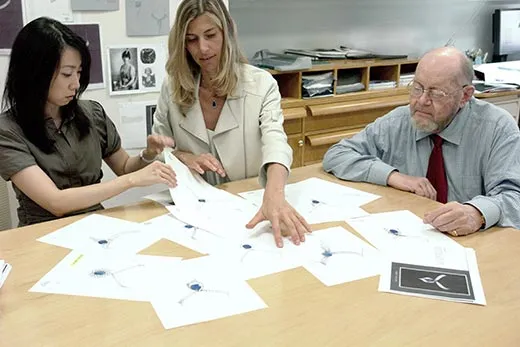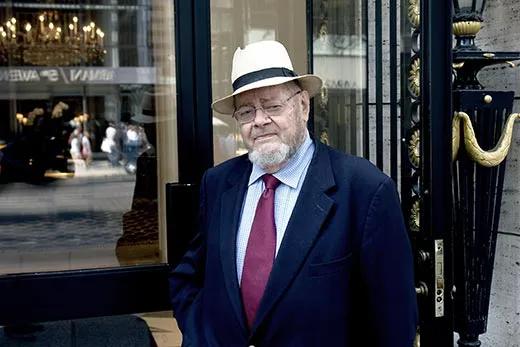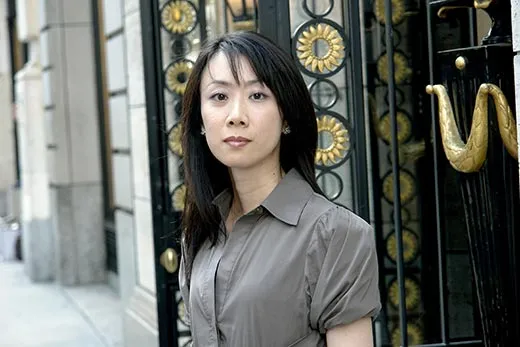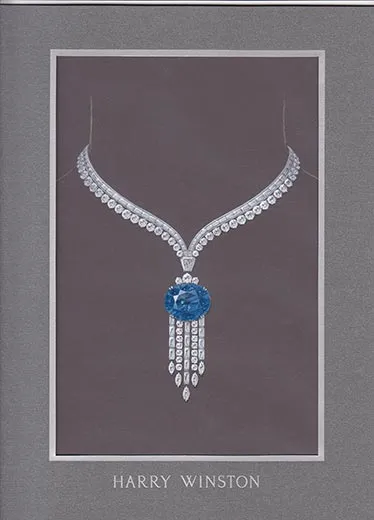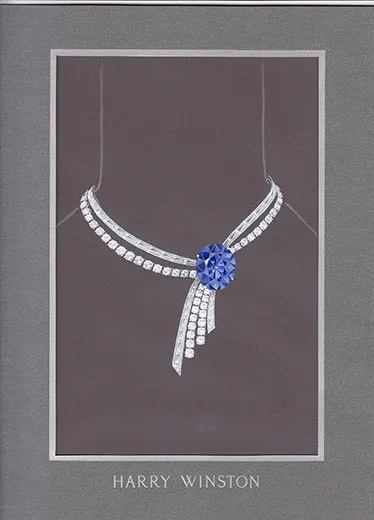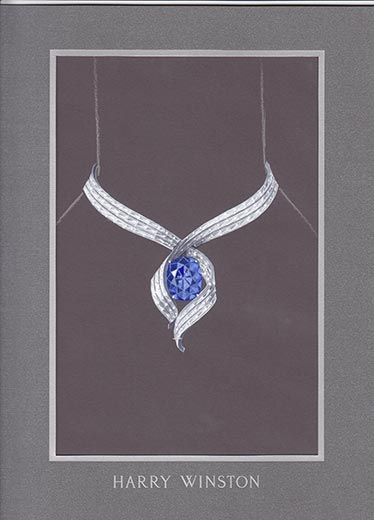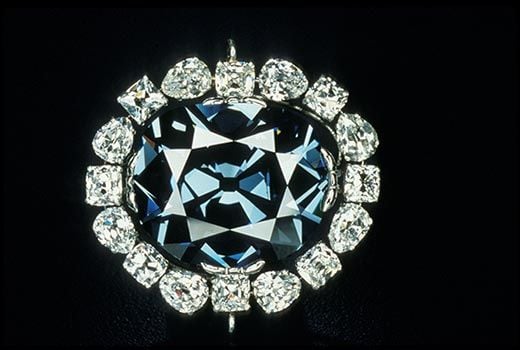A New Chapter in the Hope Diamond’s History
The National Museum of Natural History’s most famous gem gets a modern update
/https://tf-cmsv2-smithsonianmag-media.s3.amazonaws.com/filer/Hope-Diamond-631.jpg)
The Hope Diamond is the crown jewel of the National Museum of Natural History's internationally recognized, 10,000-strong gems collection. Ever since its arrival at the Smithsonian in 1958, visitors have flocked to see the fabled 45.52-carat brilliant blue beauty.
Today marks a new chapter in the history of the famous diamond. The New York-based jeweler Harry Winston, the firm that donated the Hope to the museum, has drafted three new modern settings for the stone. All three designs, exquisitely rendered by two of the firm's top designers, illustrate the Hope enshrined in baguette diamonds.
The decision to reset the diamond came on the heels of the 50th anniversary of Harry Winston's donation. "As we were thinking about the anniversary, we came up with a theme of giving the public a chance to see the diamond in a way they've never seen it before," says Jeffrey Post, curator of gems at the National Museum of Natural History. "How often do you have a 50th? We needed to have a celebration." The celebration, they decided, would be to display the Hope in a new way.
The challenge, then, was to create a modern design that improved the way the diamond looked. To give the Hope an updated look for its golden anniversary, the team at Harry Winston started with dozens of preliminary sketches, and eventually winnowed them down to three finalists: Renewed Hope, A Journey of Hope and Embracing Hope.
The designs, says Sandrine de Laage, vice president of design at Harry Winston, create a "very interesting contrast between the deep blue of the diamond, the brilliance of the diamond and the cooler aspects of the baguette diamonds."
Trained in France and born to a family of jewelry designers, Maurice Galli has worked for the firm for nearly two decades and is the only designer to have worked with Harry Winston, who died in 1978.
Galli says his first design, A Journey of Hope, symbolizes the American experience. In it, the stone asymmetrically joins strands of baguettes. Galli calls it a crossroad, "uniting hope and opportunity."
In Galli's second design, Embracing Hope, a ribbon of three rows of baguette diamonds hugs the Hope Diamond at the center. "The idea there was to create the very strong contrast between the brilliance, the life of the Hope itself and the look of the baguettes," he says.
Designer Rie Yatsuki created the third design, Renewed Hope, in which dangling diamonds recall the flow of water in nature, Yatsuki says. "I wanted to give a lot of brilliance to the Hope Diamond to enhance the beauty and the energy," she adds.
The museum announced today that just one of the three Harry Winston settings will be crafted. The Hope will be temporarily housed in the new setting and put on display this spring for a limited time, after which the setting will return to Harry Winston.
But which setting will be chosen? In an unusual move, museum officials say, the selection will be decided by the public, in a first-ever popular vote.
Between now and September 7, visitors will vote for one of the three designs through an online poll, hosted by the Smithsonian Channel, whose new documentary "Mystery of the Hope Diamond" is in production and due out next spring.
Alas, the new setting, unlike the diamond, isn't forever. After a limited-time, the diamond will be returned to its original, historic setting. Even the team at Harry Winston can't argue with that logic. "I think the setting is part of the heritage, it's part of what the Hope diamond is today," de Laage says.
The Hope Diamond wasn't known by that name until the 1830s, relatively late in the diamond's long history, when it was owned by the Hope family in London. The stone's journey began in India more than 300 years ago, when it was purchased by a French merchant. For generations, the stone traveled from France to London to New York and back again and then in 1910 it came to Washington, D.C., where the diamond's so-called curse evolved. It began as a tall tale that jeweler Pierre Cartier concocted to entice the interest of the wealthy and prestigious Evalyn Walsh McLean. She purchased the stone in 1912. Harry Winston bought the stone in 1949, two years after Evalyn's death, and the rest is history.
